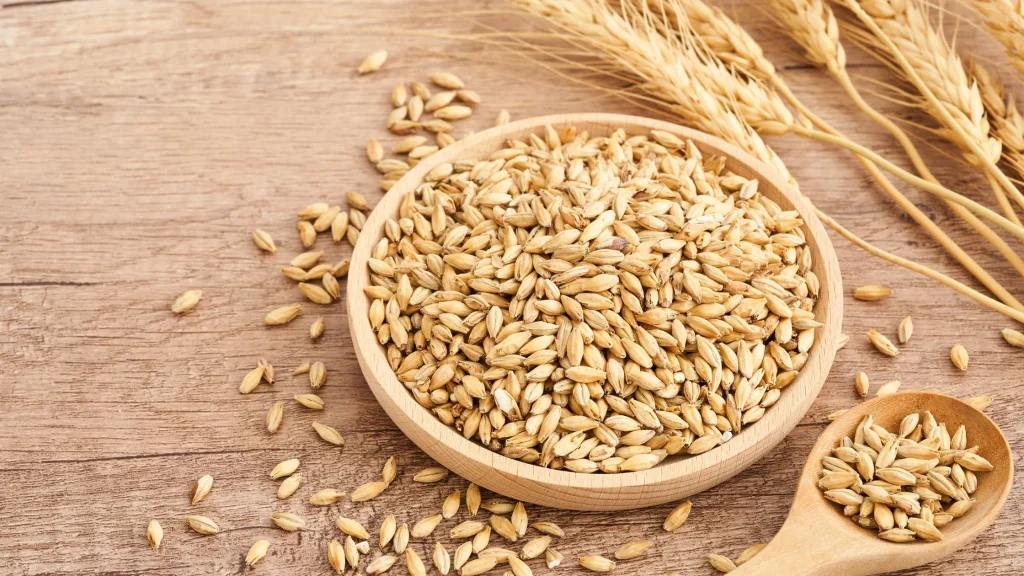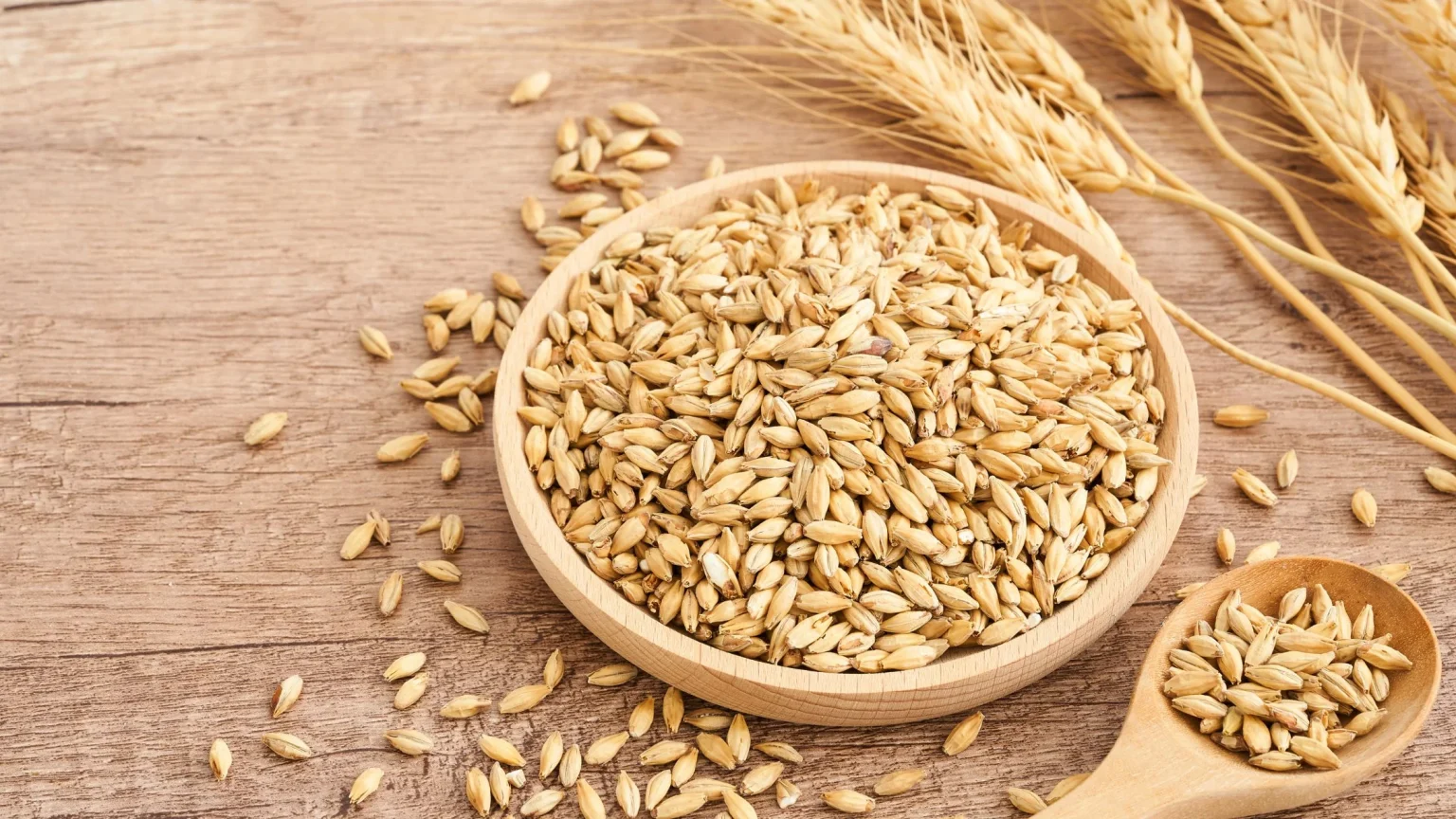Barley is an ancient cereal grain that has been cultivated for thousands of years. It is a highly nutritious and versatile food that offers a wide range of health benefits. This article will explore the history, nutritional profile, culinary uses, and health advantages of incorporating barley into one’s diet. Barley is a whole grain that is packed with fiber, protein, vitamins, and minerals, making it a valuable addition to a balanced and healthy lifestyle.

Key Takeaways
- Barley is an ancient whole grain with a rich history dating back thousands of years.
- Barley is a nutritional powerhouse, providing fiber, protein, vitamins, and minerals.
- Barley is versatile and can be used in a variety of culinary applications, from soups and stews to baking.
- Barley offers numerous health benefits, including aiding in weight management, promoting heart health, and potentially reducing cancer risk.
- Barley has a low glycemic index, making it a great choice for individuals with diabetes or those looking to manage their blood sugar levels.
What is Barley?
Barley is an ancient cereal grain that has been cultivated for thousands of years. It is believed to have originated in the Fertile Crescent region of the Middle East and has been an important food staple for many civilizations throughout history, including ancient Egyptians, Greeks, and Romans.
Ancient Grain with a Rich History
The history of barley can be traced back to at least 10,000 years ago, making it one of the earliest domesticated crops. Over the centuries, barley has played a significant role in the diets and economies of various cultures, from being a dietary staple to being used in the production of beer and other alcoholic beverages.
Botanical Classification and Origins
Botanically, barley is classified as a member of the grass family Poaceae and is closely related to other cereal grains such as wheat and rye. While the precise origins of barley are not entirely clear, it is known to have been one of the first crops to be cultivated by early human civilizations, with evidence of its cultivation dating back to at least 10,000 years ago.
Nutritional Benefits of Barley
Barley is an exceptionally nutritious grain that offers a wide range of health benefits. It is rich in dietary fiber, with one cup of cooked barley providing over 6 grams of fiber, including both soluble and insoluble varieties. Barley fiber helps promote feelings of fullness and supports digestive health.
Rich in Fiber and Protein
Barley protein is also a notable feature, with around 4 grams of protein per cup. This makes barley a valuable addition to a balanced, protein-rich diet. The combination of fiber and protein in barley can help keep you feeling satisfied and energized throughout the day.
Packed with Vitamins and Minerals
In addition to its fiber and protein content, barley is packed with essential vitamins and minerals, such as B vitamins, iron, magnesium, and phosphorus. These nutrients play crucial roles in maintaining overall health and supporting various bodily functions.
Low Glycemic Index and Diabetes-Friendly
Importantly, barley has a low glycemic index, meaning it does not cause rapid spikes in blood sugar levels. This makes barley a great choice for individuals with diabetes or those looking to manage their blood sugar levels. The barley and diabetes connection is an important consideration for those seeking to maintain healthy blood sugar control.
Barley in Culinary Applications
Barley is a versatile grain that can be incorporated into a wide range of culinary dishes. One of the most popular ways to enjoy barley is in soups and stews, where it adds a delightful nutty and chewy texture while also helping to thicken the overall consistency of the dish. Barley can be an excellent addition to vegetable-based soups, creating a heartier and more filling base.
Barley in Soups and Stews
The mild, slightly sweet flavor of barley pairs beautifully with a variety of vegetables, meats, and herbs, making it a versatile ingredient in soups and stews. Its ability to absorb flavors and provide a satisfying, substantial texture makes barley an ideal choice for recipes like beef and barley stew, chicken and barley soup, or vegetable barley soup. The nutty notes of the barley complement the other ingredients, creating a harmonious and comforting dish.
Barley Flour for Baking
In addition to its culinary uses in soups and stews, barley can also be incorporated into baked goods. Barley flour is a great alternative to traditional wheat flour, adding fiber, protein, and a unique flavor profile to breads, muffins, and other baked items. The mild, slightly sweet taste of barley flour makes it a suitable substitute for wheat flour in a variety of recipes, from barley baking to barley flour pancakes and waffles.
| Culinary Application | Key Benefits |
|---|---|
| Barley in soups and stews | Adds nutty, chewy texture and helps thicken the dish |
| Barley flour for baking | Provides fiber, protein, and a unique flavor profile |
Health Benefits of Barley
Incorporating barley into one’s diet can provide a range of important health benefits. The high fiber content of barley can help to promote feelings of fullness and satiety, which may aid in weight management efforts. Additionally, the soluble fiber in barley has been shown to help lower cholesterol levels, thereby promoting heart health and reducing the risk of cardiovascular disease.
Some research has also suggested that regular consumption of barley may help to reduce the risk of certain types of cancer, such as colorectal cancer, due to its antioxidant properties and ability to regulate blood sugar levels. By incorporating this versatile and nutritious grain into a balanced diet, individuals can take advantage of its many health-promoting attributes.
Aids in Weight Management
The high fiber content of barley can help to promote feelings of fullness and satiety, which may aid in weight management efforts. The soluble fiber in barley can also help to slow the absorption of glucose, leading to more stable blood sugar levels and reducing the risk of overeating.
Promotes Heart Health
Barley’s soluble fiber has been shown to help lower cholesterol levels, which is crucial for maintaining a healthy heart. The fiber in barley can help to reduce the amount of LDL (bad) cholesterol in the bloodstream, thereby reducing the risk of cardiovascular disease.
May Reduce Cancer Risk
Some studies have suggested that the regular consumption of barley may help to reduce the risk of certain types of cancer, such as colorectal cancer. This is due to barley’s antioxidant properties and its ability to regulate blood sugar levels, which can play a role in the development of certain cancers.
FAQ
What is barley?
Barley is an ancient cereal grain that has been cultivated for thousands of years. It is a member of the grass family Poaceae and is closely related to other grains like wheat and rye.
What are the nutritional benefits of barley?
Barley is a highly nutritious grain that is rich in dietary fiber, protein, vitamins, and minerals. It has a low glycemic index, making it a great choice for individuals with diabetes or those looking to manage their blood sugar levels.
How can barley be used in cooking and baking?
Barley can be used in a variety of culinary applications, such as in soups and stews, where it adds a nutty, chewy texture and helps to thicken the dish. Barley flour can also be used in baking, adding fiber and nutrients to breads, muffins, and other baked goods.
What are the health benefits of incorporating barley into one’s diet?
Consuming barley can provide numerous health benefits, including aiding in weight management, promoting heart health, and potentially reducing the risk of certain types of cancer. The high fiber content of barley can help to promote feelings of fullness and satiety, while the soluble fiber can help to lower cholesterol levels.
Where does barley originate from?
Barley is believed to have originated in the Fertile Crescent region of the Middle East and has been an important food staple for many civilizations throughout history, including ancient Egyptians, Greeks, and Romans.











